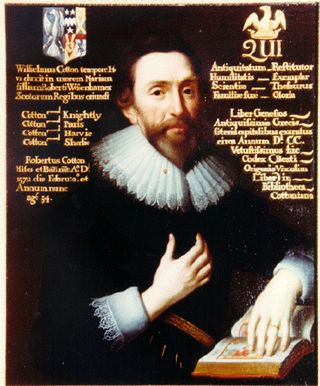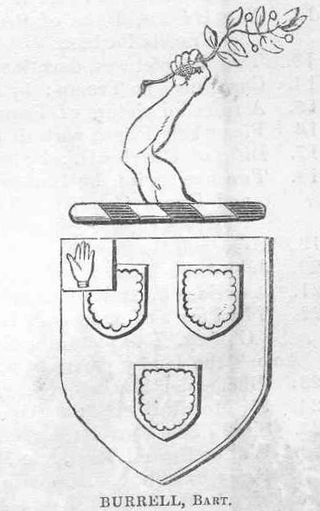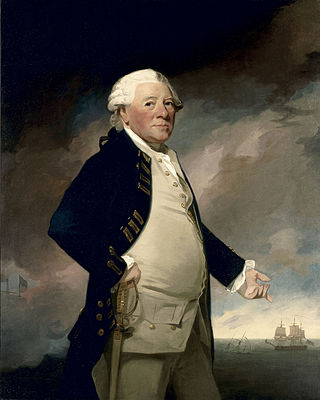Related Research Articles

Marquess of Anglesey is a title in the Peerage of the United Kingdom. It was created in 1815 for Henry Paget, 2nd Earl of Uxbridge, a hero of the Battle of Waterloo, second in command to the Duke of Wellington. The Marquess holds the subsidiary titles of Earl of Uxbridge, in the County of Middlesex, in the Peerage of Great Britain (1784), Baron Paget, de Beaudesert, in the Peerage of England (1553), and is also an Irish Baronet, of Plas Newydd in the County of Anglesey and of Mount Bagenall in the County of Louth.

Baron Glanusk, of Glanusk Park in the County of Brecknock, is a title in the Peerage of the United Kingdom. It was created in 1899 for Sir Joseph Bailey, 2nd Baronet, who had earlier represented Herefordshire and Hereford in the House of Commons as a Conservative. Both his son, the second Baron, and grandson, the third Baron, served as Lord Lieutenant of Brecknockshire. The latter was succeeded by his first cousin, the fourth Baron. He was the son of the Hon. Herbert Crawshay Bailey, fourth son of the first Baron. As of 2010 the titles are held by his son, the fifth Baron, who succeeded in 1997.

Baron Cottesloe, of Swanbourne and Hardwick in the County of Buckingham, is a title in the Peerage of the United Kingdom. It was created on 2 March 1874 for the Conservative politician and former Chief Secretary for Ireland, Sir Thomas Fremantle, 1st Baronet (1798–1890). He was the son of Admiral Sir Thomas Fremantle (1765–1819). Lord Cottesloe had already been created a Baronet, of Swanbourne in the County of Buckingham, on 14 August 1821, chiefly in recognition of his father's services, and with remainder to the latter's heirs. His father Sir Thomas Fremantle was created Baron Fremantle, of the Austrian Empire, which Lord Cottesloe inherited in 1819 with the death of his father. Subsequently, in 1822 he was given a Royal licence, which authorized him and his successors to use the title in Britain. However, a warrant issued on 27 April 1932 withdrew all the royal licences, only allowing the use of the title to the then current holders, their heir and their heir's heir. The fifth baron was the last holder being allowed to use the Austrian title in the United Kingdom.

Sir John Thomas Duckworth, 1st Baronet, GCB was an officer of the Royal Navy, serving during the Seven Years' War, the American War of Independence, the French Revolutionary and Napoleonic wars, as the Governor of Newfoundland during the War of 1812, and a member of the British House of Commons during his semi-retirement. Duckworth, a vicar's son, achieved much in a naval career that began at the age of 11.

Vice Admiral Sir Jahleel Brenton, 1st Baronet, KCB was a British officer in the Royal Navy who served during the French Revolutionary and Napoleonic Wars.

There have been three Baronetcies created for persons with the surname Cotton, all in the Baronetage of England. One creation is extant as of 2008.

The Hobhouse Baronetcy, of Chantry House in the parish of Bradford-on-Avon in the County of Wiltshire and of Westbury College in the County of Gloucester, is a title in the Baronetage of the United Kingdom. It was created on 22 December 1812 for Benjamin Hobhouse, a wealthy brewer and member of parliament for Bletchingley, Grampound and Hendon. His eldest son, the second Baronet, was a prominent writer and Liberal politician and notably served as Chief Secretary for Ireland and as President of the Board of Control. In 1851 he was raised to the peerage as Baron Broughton, of Broughton-de-Gyffard in the County of Wiltshire. However, he had no sons and on his death the barony became extinct, while he was succeeded in the baronetcy by his nephew, the third Baronet. The latter's son, the fourth Baronet, was also a noted Liberal politician and held office as Chancellor of the Duchy of Lancaster and as Postmaster General.
Admiral Sir Richard Hughes, 2nd Baronet was a British naval commander.

There has been one baronetcy created for a person with the surname Burrell. Another baronetcy passed by special remainder to the Burrell family.
The Madden Baronetcy, of Kells, County Kilkenny, is a title in the Baronetage of the United Kingdom. It was created in 1919 for the naval commander, Admiral Sir Charles Madden. He was succeeded by his son, the second Baronet, who was also a distinguished naval officer and served as Commander-in-Chief of the Home Fleet between 1963 and 1965.

There have been seven baronetcies created for persons with the surname Parker, three in the Baronetage of England, two in the Baronetage of Great Britain and two in the Baronetage of the United Kingdom. Two of the creations are extant as of 2008. Though none of the different families of baronets were related, several supplied a number of flag officers to the Royal Navy.

There have been two baronetcies created for members of the Hardy family, both in the Baronetage of the United Kingdom. The first creation became extinct on the death of the first baronet in 1839 and the second creation became extinct on the death of the fifth baronet in 2017.
Sir Lancelot Charles Lee Brenton, 2nd Baronet was a British nobleman who translated the Septuagint version of the Bible into English.

The Leeds Baronetcy, of Croxton Park in the County of Cambridge, is a title in the Baronetage of the United Kingdom. It was created on 31 December 1812 for George Leeds. He was an equerry to Prince Augustus Frederick, Duke of Sussex. The Croxton Park estate in Cambridgeshire had been in the Leeds family since circa 1568. As of 2011 the presumed ninth and present Baronet, a resident of Canada, has not successfully proven his succession and is not on the Official Roll of the Baronetage.
There have been two baronetcies created for members of the McMahon family, both in the Baronetage of the United Kingdom, and belonging to different branches of the same family. One creation is extant as of 2007.
Captain Edward Pelham Brenton was an officer of the British Royal Navy during the French Revolutionary and Napoleonic Wars whose military career was relatively quiet, apart from involvement in the capture of Martinique in 1809. Brenton became famous in the aftermath of the war, when he published the Naval History of Great Britain from the Year 1783 to 1822 in 1823. The book was popular, but Brenton was criticised at the time and since for his failure to distinguish between fact and rumour as well as his partisan political leanings. In Brenton's later life, he was heavily involved in charitable enterprises in the poorer areas of London with mixed success.

HMS Spartan was a Royal Navy 38-gun fifth-rate frigate, launched at Rochester in 1806. During the Napoleonic Wars she was active in the Adriatic and in the Ionian Islands. She then moved to the American coast during the War of 1812, where she captured a number of small vessels, including a US Revenue Cutter and a privateer, the Dart. She then returned to the Mediterranean, where she remained for a few years. She went on to serve off the American coast again, and in the Caribbean, before being broken up in 1822.

The Blane Baronetcy, of Blanefield in the County of Ayr, was a title in the Baronetage of the United Kingdom. It was created on 26 December 1812 for the Scottish physician Gilbert Blane, known for his reforms in naval hygiene and medicine.
The Placentia class was a class of two sloops of the Royal Navy. John Henslow designed the small sloops for coastal patrol duties off Newfoundland. Their role was "to protect the fisheries and inquiring into abuses. The vessels would sit in the harbour of St Johns over the winter, and then in the spring would be fitted out to visit the ports on the station as soon as the ice had melted.

HMS Trepassey was the second vessel of her two vessel class, with both vessels being launched in 1789. John Henslow designed the small sloops for coastal patrol duties off Newfoundland, "to protect the fisheries and inquiring into abuses." In 1793, after the outbreak of the French Revolutionary Wars, she accepted the surrender of Miquelon. This appears to have been the highpoint of her career. She disappears from the records in 1807.
References
- ↑ "No. 16663". The London Gazette . 3 November 1812. p. 2189.
- 1 2 Burke, John Bernard (1852). A Genealogical and Heraldic Dictionary of the Peerage and Baronetage of the British Empire. Colburn. pp. 122–123.
- ↑ Boase, Frederic (11 August 2018). Modern English Biography. Vol. 1. Litres. p. 1872. ISBN 978-5-04-126964-7.